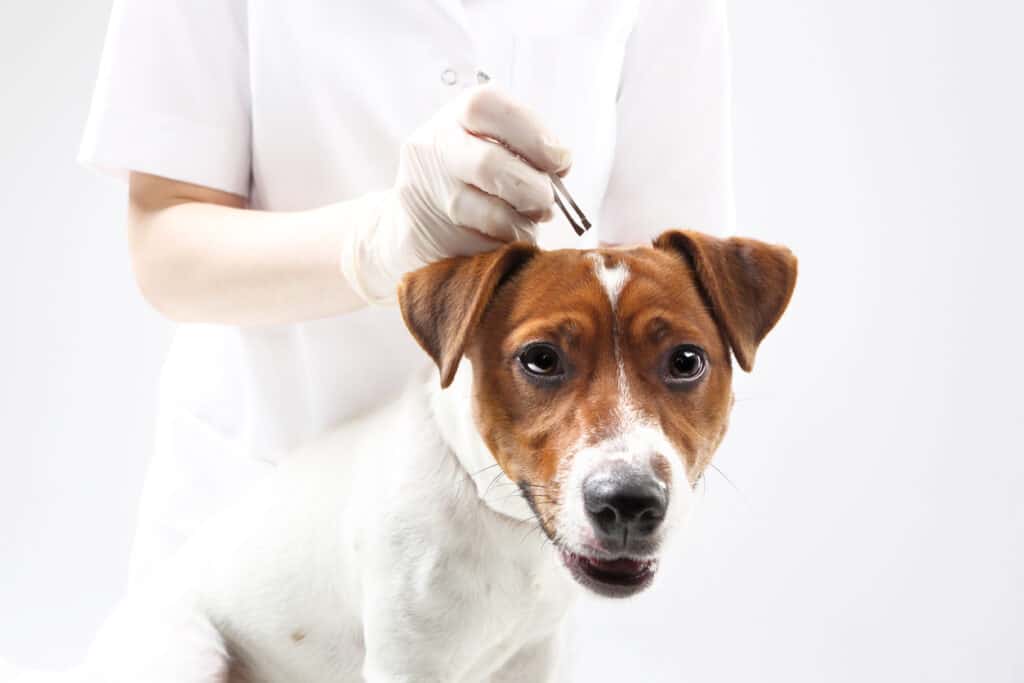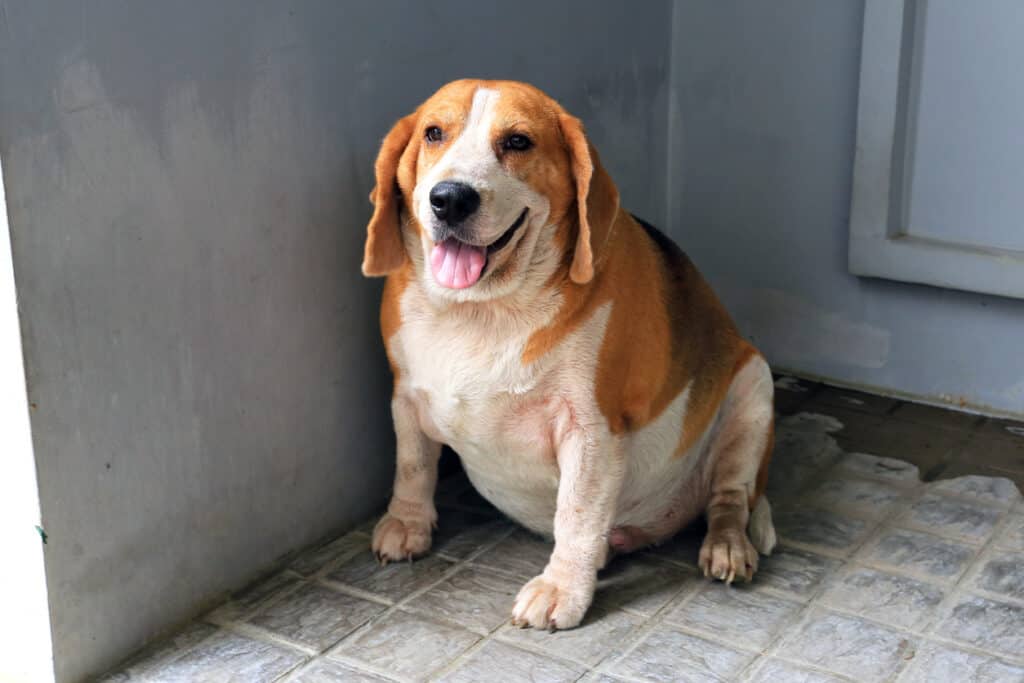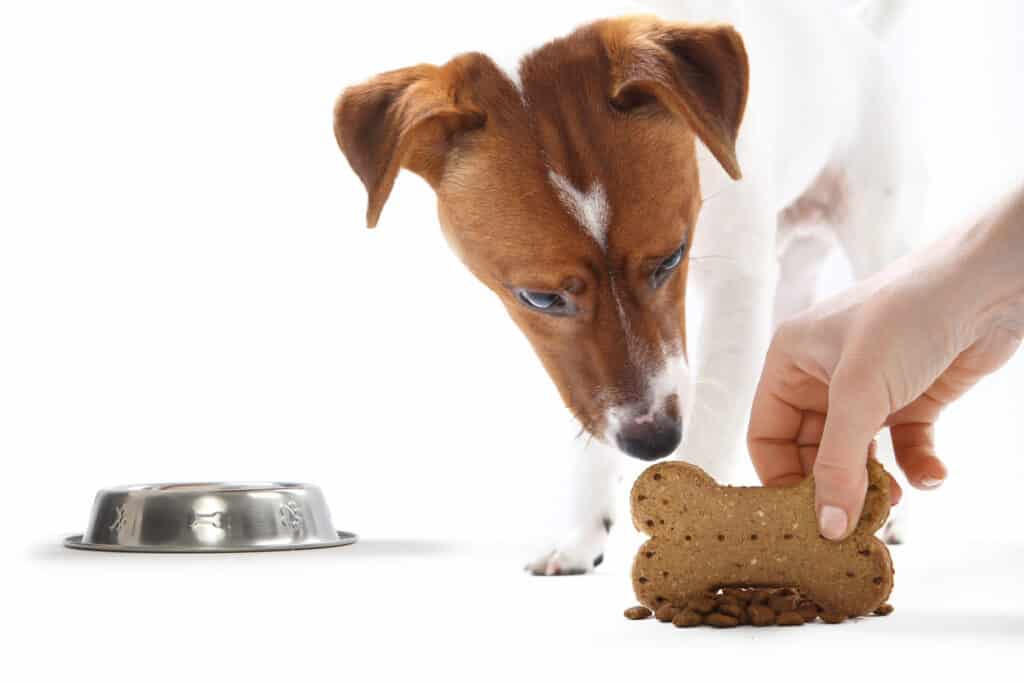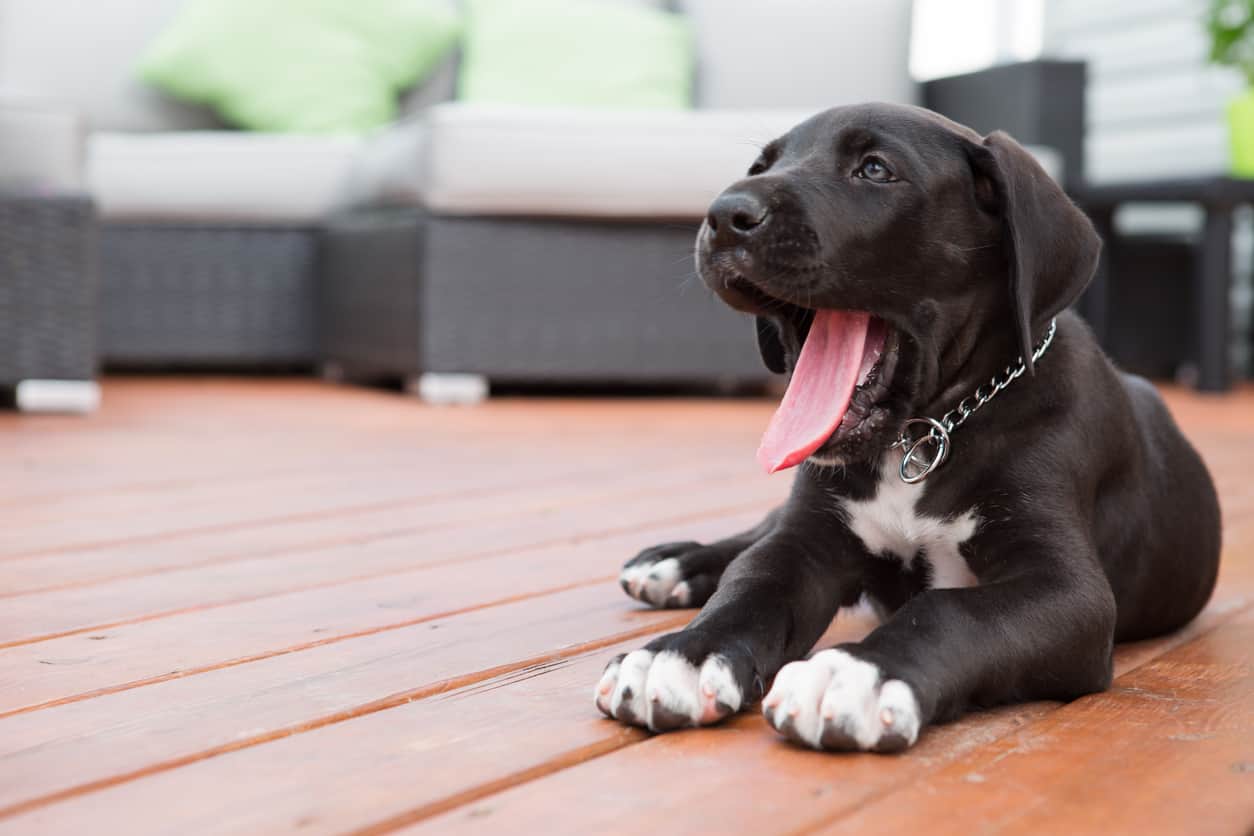Great Danes are one of the most well-known dogs for many reasons. They are enormous. They are family-friendly and love children, which often earns them the nickname of gentle giants. They are also one of the breeds most at-risk for developing a serious disease commonly referred to as bloat. If you are considering bringing a Great Dane into your home, you will want to familiarize yourself with this life-threatening condition.

What is bloat in Great Danes?
Bloat is the everyday term for Gastric Dilatation-Volvulus (GDV). It is an extremely painful, always life-threatening condition that occurs when too much air or gas fills the stomach and becomes trapped.
This results in a distended abdomen that will become painful to the touch as the condition worsens. After the air or gas becomes trapped, the stomach quickly begins to press up on other organs. The pressure caused by the buildup may cause the stomach to twist, a phenomenon known as torsion. When this happens, the likelihood of death increases dramatically because blood flow is effectively cut off and it’s inevitable that the dog will go into shock and die.

This is why veterinary intervention is crucial from the moment you suspect your Great Dane may be bloating – it is simply impossible to know whether the animal’s body will be able to expel the trapped air. Playing “wait and see” is a poor idea because if the bloat worsens and your Dane requires corrective surgery, the best-case scenario is that you pay thousands of dollars to save your pet’s life. In the worst-case scenario, you pay thousands of dollars and the veterinarian does the best she or he can – but your Great Dane passes away.
The exact cause of bloat is unknown, but veterinarians have identified several factors that contribute to increased risk of the disease. These factors have also simplified the process of identifying at-risk breeds. Great Danes are at risk because they check most of (or in some cases all) of the boxes for dogs most at-risk of developing bloat.
Factors that increase a dog’s likelihood of developing bloat

- Being a large or giant breed (specifically, one with a deep chest and/or a high height-to-width ratio)
- Genetics – family history of bloat
- Eating too quickly (“inhaling” food)
- Drinking excessive amounts of water after meals
- Exercising too rigorously too close to mealtime (both before and after)
- Consuming food that lists soybean meal, fat, or oil in the first four ingredients
- Having a fearful, skittish, anxious, or aggressive temperament
- Being a male or a senior
Bloat has an average mortality rate of about 30% across all dog breeds, but Great Danes are among the most vulnerable breeds with around a 40% likelihood of developing the disease at least once throughout their lives and a 40% breed mortality if they do. Additionally, Great Danes are five-to-eight times more likely to bloat than dogs with a low height-to-width ratio.
Other breeds at high risk of developing bloat include Irish Wolfhounds and English Mastiffs (actually, Mastiff breeds in general). But the Irish Wolfhound and English Mastiff are notable because those two breeds feature prominently in the genetic makeup of the modern Great Dane. Some of the other breeds at increased risk of developing bloat include German Shepherds, Doberman Pinschers, and Weimaraners, and Standard Poodles.
Signs of bloat in Great Danes
Restlessness and Pacing
If you’re attuned to your dog’s behavior, it should be relatively easy to identify this early sign of bloat. A restless animal will seem unable to sit still or settle down, and may ignore directives to do so. While this is far from a definitive sign of bloat, it’s important to keep in mind the possibility as you go about ruling out other options, such as boredom, agitation, or the need to go to the bathroom.
Distended stomach that is hard to the touch
This is one of the first true warning signs that your suspicions are likely correct. If your Great Dane’s usually svelte appearance suddenly becomes rounded from the side and when viewed from above there is a good chance they are bloating, especially if they are exhibiting restlessness or pacing. Additionally, if you tap on the side of the stomach and your Great Dane whines in pain, it could be a signal that air or gas is trapped and becoming painful.
Unproductive retching / excessive, unusual drool
If your Great Dane is making retching noises, but nothing is coming up, it could be a sign of bloat. If there is no obstruction in the throat, unproductive retching occurs to signal distress in the stomach. This is usually accompanied by unusual amounts of drool that may be a different texture than usual.
Gums any color than healthy pink
Just like humans, your Great Dane should have bright pink, healthy gums. Pale or discolored gums are a signal that all is not well and that blood flow or circulation has been compromised.
Labored breathing / rapid pulse
If your Great Dane appears to be struggling to breathe and has a faster-than-usual heartbeat, it may be at risk of collapse.
How to respond to a bloating dog
If you suspect your Great Dane is bloating, you should contact your veterinarian immediately. While there is a slight chance that bloat will go away on its own, it is always considered a life-threatening condition that should be reviewed by a professional. Additionally, should your Great Dane’s condition worsen, it will be helpful to be in a place equipped to make your pet as comfortable as possible.
While you are preparing to bring your Great Dane into the vet, you may consider giving them over the counter gas relief pills such as Phazyme. While these are not officially recommended, many owners in the Great Dane community swear by this method of keeping their dog comfortable. As with anything, it’s important to consult with your veterinarian about the best options for your particular dog.
Costs associated with veterinary care for a bloating dog
If you’re a prospective Great Dane owner, you need to be aware: this is an expensive breed to own in general, but costs can quickly spiral when health issues crop up. In the best-case scenario, a case of bloat will require an emergency trip to the vet, X-rays, and some sort of medical intervention which will easily cost around $1000.
Upon arriving at the vet, if the signs of bloat in your Great Dane are mild, your veterinarian will likely perform a full physical to confirm the condition, with an emphasis on identifying if there is tympany (gas build up). If tympany is found, the veterinarian may order X-rays to confirm the stomach is in distress. From there, the options are to insert a bore catheter to release the gas, or surgery. If surgery is required, the stomach has likely twisted and the Great Dane will also receive a gastropexy, also known as a stomach tack, which is a procedure pinning the stomach to the abdomen wall to prevent it from twisting again.
Depending on your veterinarian, should your Great Dane bloat and require corrective surgery, there may be multiple types of surgery options available to you. The least invasive options will be the most costly, but also require the shortest amount of recovery time.
How to prevent bloat in a Great Dane
You can work to lower the odds of your Great Dane bloating by performing due diligence before choosing a Great Dane and bringing them home. As genetics play a large role in the likelihood that a Great Dane will bloat in the future, your breeder should be able to answer questions regarding whether bloat runs in the family and if so, how many immediate family members have suffered the condition. Additionally, male Great Danes are twice as likely to develop bloat than females, though the reasons for this are unknown.
Temperament also plays a large role. Whether you are going through a breeder or adopting a Great Dane from an accredited rescue, a Great Dane with a happy and calm demeanor will have a lower likelihood of bloating. This is because there appears to be a link between stress and bloat. A note on temperament though – even if you bring home the happiest, calmest pup, you will still be responsible for providing an environment that is as calm and stress-free as possible. Great Danes in particular are highly sensitive dogs, meaning that they may be at increased risk of becoming stressed due to their surroundings than a breed that is less sensitive.
The food you feed your Great Dane can play a huge role in whether or not the dog develops bloat. Choosing quality food that does not list soybean meat, fat, or oil in the first four ingredients is an easy sand proactive step owners can take to ensure that they are providing their Great Dane with healthy food. Indeed, because Great Danes are somewhat infamous for their sensitive stomachs, owners have many resources at hand should they develop in interest in making their Great Dane’s food themselves.
In addition to what kind of food, how much and how often you feed your Dane can also influence the risk of bloat. For example, Great Danes who were fed one meal a day were twice as likely to bloat than Great Danes fed two times per day. When it’s a puppy, you will be feeding your Great Dane several times a day, and that routine of small portions spread out throughout the day should continue into adulthood, although they can be consolidated somewhat.
The speed at which your Great Dane eats may affect its likelihood of contracting bloat. Raised feeders are a popular and contentious point of discussion at the moment that purport to provide a more supported feeding experience for Danes based on their unique confirmation, but others find it more natural (and therefore healthy) to feed their Danes at floor level. In any case, Great Danes should be encouraged to eat as slowly as possible, and one way of doing this is by placing large rocks (too big to consume or choke on) in your dog’s bowl. This way, it will have to move them around to reach the food, resulting in a slower eating experience.
Finally, it is possible to get the gastropexy procedure for your Great Dane as a puppy. This stomach tacking procedure is typically performed at the time as a spay or neuter is highly recommended. As always, you will want to consult with your veterinarian to determine the best course of action for your particular Dane. Not all veterinarians necessarily agree that a gastropexy is necessary for puppies, but more and more often, considerations of certain breeds’ likelihoods of bloating is fueling an increase in recommendations that Great Danes receive a stomach tack as puppies as a proactive measure to counteract the risk of bloat.

